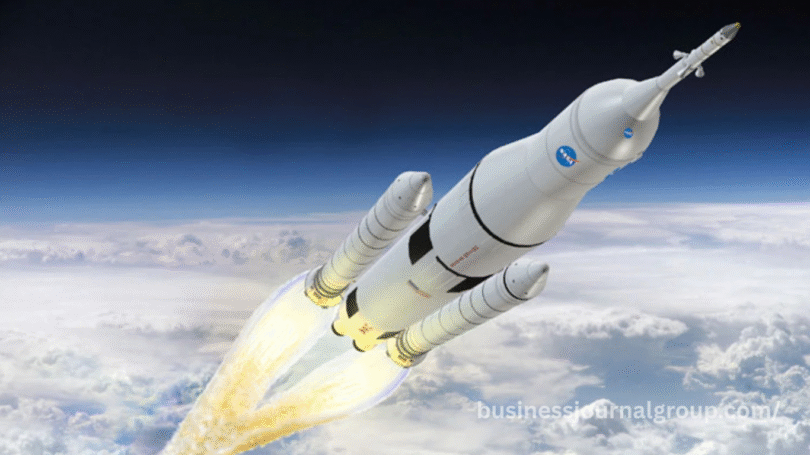NASA is taking space exploration to the next level right into your living room. In a groundbreaking move, the space agency has announced its plan to stream rocket launches on Netflix, offering the public an immersive, front-row experience of its most thrilling missions.
This collaboration merges cutting-edge science with global entertainment, making it easier than ever for millions to engage in space exploration. As NASA evolves to connect with new generations, streaming platforms like Netflix offer the perfect gateway to spark curiosity and inspire future scientists.
This partnership isn’t just about visibility it’s about accessibility. From casual viewers to die-hard space fans, everyone can now witness rocket launches with cinematic clarity, real-time commentary, and exclusive behind-the-scenes footage. Here’s everything you need to know about NASA’s bold leap into the streaming era.
NASA and Netflix Join Forces: A New Era in Space Storytelling
In a media landscape driven by streaming services, NASA has chosen to meet audiences where they already are on Netflix. By doing so, NASA modernizes its outreach strategy, embracing visual storytelling and on-demand culture.
Historically, NASA has streamed launches via its platforms and social media, but limited reach and production quality often restricted its audience. Netflix, with over 260 million global subscribers, provides a vast stage to showcase not just the thrill of launches but the depth of human ingenuity behind them.
This partnership aims to deliver high-definition, narrative-driven broadcasts of rocket launches, blending real-time space operations with documentary-style production. It’s more than just watching a rocket blast off it’s about experiencing the emotions, challenges, and innovations that come with it.
What Viewers Can Expect from the NASA-Netflix Collaboration
Netflix is no stranger to space content. Its library includes hits like The Martian, Lost in Space, and Countdown: Inspiration4 Mission to Space. But this time, the streaming giant moves beyond dramatized fiction into real-time rocket launches and factual space missions.
The planned streams will include:
- Live launch events with expert commentary
- Multi-camera angles, including onboard spacecraft footage
- Pre-launch build-up showcasing astronaut training and final preparations
- Post-launch analysis and mission updates
- Interactive segments for viewers to engage with NASA scientists
The goal is to humanize space missions while maintaining scientific accuracy, providing viewers with a cinematic yet factual view of outer space.
Why This Matters for NASA and the Public
NASA’s decision reflects a broader strategy to expand its influence beyond traditional science audiences. Partnering with Netflix enables NASA to reach younger demographics who may not typically visit government websites or watch cable TV for space coverage.
It’s also about fostering transparency. Live broadcasts provide unfiltered access to major milestones, reinforcing public trust and global support for space exploration.
For Netflix, this is an opportunity to blend entertainment with education, aligning its brand with inspirational, future-forward content. For viewers, it’s an invitation to join humankind’s most excellent adventure exploring the cosmos.
The Tech Behind the Streams: Precision and Clarity
Streaming a rocket launch is no ordinary broadcast. NASA and Netflix will utilize cutting-edge satellite links, ultra-HD cameras, and real-time data overlays to deliver an immersive experience.
Multiple camera placements from mission control rooms to rocket engine nozzles will offer perspectives never seen before. Sound engineers will isolate real-time rocket audio, while visual overlays will explain the physics in simple terms.
Expect augmented reality displays, countdown graphics, mission telemetry, and visual cues that turn technical data into digestible, engaging content. This marriage of science and media ensures the broadcasts are not just visually stunning but also informative.
Past Attempts and How This Is Different
NASA has consistently sought to make its launches public, from the Apollo missions broadcast on TV to the YouTube streams of the Artemis program. However, previous efforts often suffered from limited production budgets, technical issues, or a niche audience reach.
This partnership is a different beast altogether. Netflix’s production capabilities ensure Hollywood-level quality for a subject that traditionally struggled to captivate mainstream audiences.
Imagine the emotional weight of a launch, captured with cinematic finesse, paired with scientific explanation. It’s not just about rocket science it’s about storytelling, human achievement, and ambition on a cosmic scale.
Impact on Global Viewership and Education
One of the biggest wins from this collaboration is global accessibility. NASA launches will no longer be confined to niche platforms or specific time zones. Anyone with a Netflix account can tune in live or on-demand regardless of their location.
Educational institutions are already showing interest. Teachers can integrate live missions into classrooms, enhancing STEM education with real-time inspiration. Students can watch astronauts suit up, rockets ignite, and science unfolds, making space exploration tangible and relevant.
By democratizing access, NASA ensures that space belongs to everyone regardless of nationality or background.
What This Means for the Future of Space Media
NASA’s entry into Netflix signals a larger shift in how space content is consumed. As private space companies like SpaceX and Blue Origin also adopt high-quality live streaming, we may see an explosion of space-themed media content.
Expect documentaries, behind-the-scenes miniseries, launch recaps, and interviews with astronauts. Netflix could even venture into virtual or augmented reality space content, giving users the ability to “walk” on the Moon or explore Mars rovers in 3D.
This is not just a one-time event it’s the beginning of a media revolution for space exploration, one where the cosmos becomes part of everyday entertainment.
How This Could Influence Other Space Agencies
NASA’s collaboration might serve as a blueprint for agencies like ESA, JAXA, or ISRO. Streaming platforms offer a cost-effective and high-reach solution for promoting space missions and public science.
If successful, expect other agencies to follow suit, bringing global launches into homes worldwide. This creates opportunities for cross-agency missions to be co-broadcast, encouraging international collaboration and unity in science.
In the long run, partnerships like this could even increase public funding and support for space programs by keeping missions visible, exciting, and emotionally engaging.
Frequently Asked Questions
Why is NASA partnering with Netflix for rocket launches?
NASA aims to expand public engagement and accessibility by using Netflix’s vast global audience and top-tier production capabilities to stream launches in high-quality formats.
Will the NASA rocket launch streams be live or pre-recorded?
Most of the events will be live with real-time commentary, but Netflix will also provide recorded versions for on-demand viewing.
Will Netflix charge extra to watch NASA launches?
No. The rocket launch streams will be included within the existing Netflix subscription—no additional charges are expected.
Which NASA missions will be streamed first on Netflix?
Initial broadcasts may include upcoming Artemis missions, satellite launches, and possibly joint international space operations.
Can schools use these Netflix streams for educational purposes?
Yes, schools with Netflix access can stream the launches during class, making them an excellent resource for STEM education.
Will the streams include astronaut interviews or behind-the-scenes content?
Absolutely. Expect pre-launch training footage, live astronaut Q&A sessions, and post-launch debriefs to be part of the package.
How often will NASA stream on Netflix?
While not daily, key launches and significant events will be scheduled in advance. A regular content calendar will likely be developed based on mission timelines.
Will subtitles or translations be available?
Yes, Netflix plans to provide multi-language subtitles and voiceovers to cater to global audiences, enhancing accessibility.
Conclusion
NASA’s bold move to stream rocket launches on Netflix marks a transformative moment in space outreach and public engagement. By blending science with cinematic storytelling, NASA opens new doors for education, inspiration, and global curiosity. This partnership not only makes space exploration more accessible but also ensures it becomes an integral part of popular culture—fueling the next generation’s dreams and ambitions.





